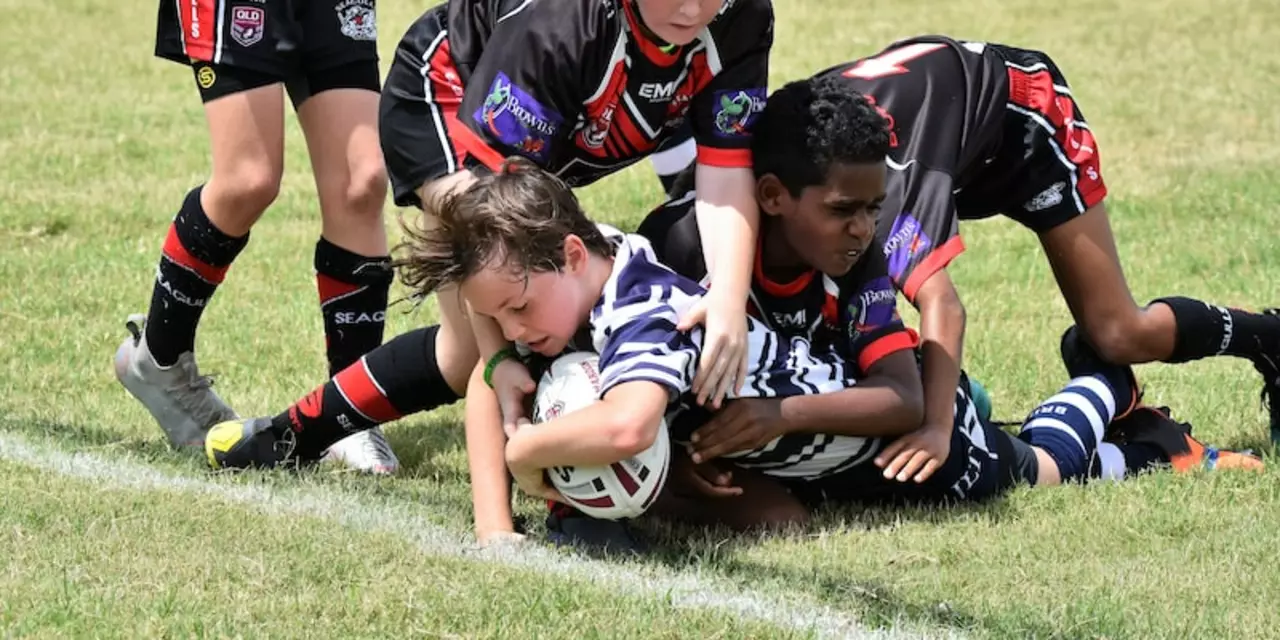5 Exercises to Help You Get Started Training for Rugby
If you’re looking to start training for rugby, there are certain exercises that you should be focusing on. Rugby is a sport that requires a combination of strength, power, and stamina, so it’s important to make sure you’re doing the right exercises to help you build these qualities. Here are 5 exercises to help you get started training for rugby:
1. Squats
Squats are a great exercise for building leg strength, which is essential for rugby. Make sure you’re using correct technique and form when you do them. Start with your feet shoulder-width apart, lower yourself down until your thighs are parallel to the ground, and then stand back up again. Start with bodyweight squats and then progress to adding weight as you get stronger.
2. Lunges
Lunges are another great exercise for building leg strength and improving balance. Start in a standing position with your feet together, and then take a big step forward with one leg. Lower your body until your front thigh is parallel to the ground, and then push up and return to the starting position. Make sure to alternate legs and keep your back straight throughout the exercise.
3. Plyometrics
Plyometrics are a great way to improve power, speed, and agility. Exercises such as plyometric push-ups, box jumps, and jump squats are all great examples of plyometric exercises that can help you improve your performance on the rugby field. Start with low impact exercises and gradually work your way up to more explosive movements.
4. Core Exercises
Having strong core muscles is essential for rugby. Core exercises such as planks, Russian twists, and mountain climbers can help you build a strong and stable core. Make sure you’re focusing on your entire core and not just your abs when doing these exercises.
5. Cardio
Cardio is essential for improving your stamina and endurance. Doing a mix of steady state cardio (such as running or cycling) and interval training (like sprints) can help you build endurance and improve your performance on the rugby field. Start slowly and gradually increase the intensity as you get fitter.
These are just a few exercises to help you get started training for rugby. Make sure to focus on the right exercises for your goals and always listen to your body. With the right training program, you’ll be ready to take on the rugby field in no time!
Introduction
Rugby is a physical sport that requires a strong, fit body. To prepare for a successful season, you need to begin training your body as early as possible. This guide will walk you through the basics of how to get your body ready for the rigors of rugby.Strength Training
Strength training is essential for rugby players. You will need to develop muscular strength and endurance to be able to compete. Focus on exercises that involve compound movements and involve multiple muscle groups. This will help you build a strong core and increase your overall power. Squats, deadlifts, and push-ups are all great exercises to get started with.Cardio Training
It is important to train your cardiovascular system for rugby. Long-distance running, cycling, and swimming are all excellent ways to improve your endurance and cardiovascular health. This will help you to last longer on the field and increase your overall performance.Speed and Agility Training
Speed and agility are crucial for rugby players. You will need to be able to make quick turns, change directions quickly, and have explosive speed. Plyometric exercises, sprints, and agility drills are all great ways to improve your speed and agility.Nutrition
Nutrition plays a critical role in rugby performance. Eating a balanced diet will help you to stay energized and focused on the field. Make sure to get plenty of lean proteins, complex carbohydrates, and healthy fats. Also, be sure to stay hydrated before and after games and practices.Conclusion
Training your body for rugby requires hard work and dedication. Follow this guide to get started on the right track. With proper preparation and training, you can be the best rugby player you can be!If you want to take your rugby training to the next level, it's important to understand the role that nutrition plays in helping you reach your goals. Eating the right foods will give you the energy and nutrients needed to maximize your performance. Here are some tips for eating right to fuel your rugby training:
- Focus on eating lean proteins, such as chicken, fish, and lean cuts of beef, pork, and lamb.
- Include complex carbohydrates like whole grains, beans, and legumes in your diet.
- Fill up on fresh fruits and vegetables, as they are packed with vitamins, minerals, and antioxidants.
- Choose healthy fats, such as olive oil, avocado, and nuts and seeds.
- Drink plenty of fluids, including water and sports drinks, to keep your body hydrated.
- Avoid processed and sugary foods, as they can lead to energy slumps and weight gain.
By following these tips, you'll be giving your body the fuel it needs to power through your rugby training sessions. Eating right is essential for achieving your goals, so be sure to make nutrition a priority.
Are you ready to take your rugby game to the next level and start training your body to perform at its best? If so, here are some strategies that can help you improve your form and performance on the pitch.
1. Develop Your Core Strength
A strong core is essential for any rugby player. Core strength helps you move more efficiently and powerfully, and can help prevent injuries. Exercises such as planks, sit-ups, and squats can help you develop your core strength. You can also add in exercises such as medicine ball throws and burpees to mix up your routine and challenge your core.
2. Increase Your Cardiovascular Endurance
Playing rugby requires a high level of cardiovascular endurance. You need to be able to sprint, jump, and tackle for extended periods of time. To increase your endurance, you should focus on doing aerobic exercises such as running, swimming, and cycling. You can also incorporate interval training into your workouts to help your body get used to the physical demands of the game.
3. Practice Proper Form and Technique
To perform at your best, you need to learn proper form and technique. This includes how to tackle, pass, and kick the ball. You can practice on your own or with a coach, but either way, it’s important to learn the proper technique so you can perform at your best during matches.
4. Improve Your Flexibility and Mobility
Rugby players need to have a high level of flexibility and mobility. You need to be able to move around the pitch quickly and easily, and having tight or inflexible muscles can hinder your performance. To improve your flexibility and mobility, you should do stretching, foam rolling, and dynamic warm-up exercises before and after your workouts.
By following these strategies, you can improve your rugby form and performance and take your game to the next level. Good luck!






Written by Caspian Beauchamp
Hello, I'm Caspian Beauchamp, a sports enthusiast with a strong passion for rugby. I've been following the sport for years, and I've gained extensive knowledge about its history, rules, and strategies. My love for rugby has led me to write informative and engaging articles that cater to both die-hard fans and newcomers alike. I enjoy analyzing matches, discussing players' performances, and sharing my insights with fellow rugby lovers. My ultimate goal is to spread the excitement of the game and help people appreciate the beauty of this incredible sport.
All posts: Caspian Beauchamp